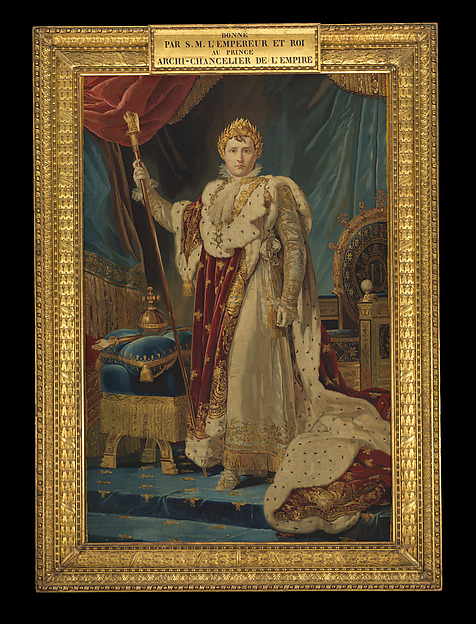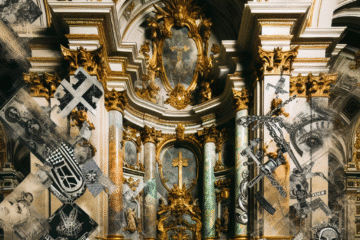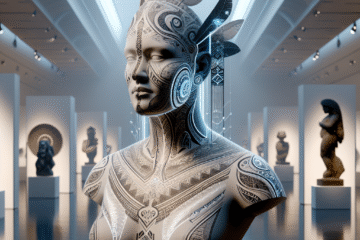
Image title: Portrait of Napoleon I
Medium: Wool, silk, silver-gilt thread (26-28 warps per inch, 10-12 per cm.); gilded pine frame
Date: designed 1805, woven 1808–11
Source:
The Met Collection
“
This world, after all our science and sciences, is still a miracle; wonderful, inscrutable, magical and more, to whosoever will think of it.
”
— Thomas Carlyle
This Is Not a Brushstroke: Conceptual Painting After Magritte
Introduction: The Pipe That Wasn’t
René Magritte’s 1929 painting The Treachery of Images famously declared, “Ceci n’est pas une pipe”—”This is not a pipe.” With those five words, Magritte did more than undermine the illusionistic power of painting; he ushered in a philosophical rupture that questioned the very relationship between image and meaning. In the wake of Magritte’s semiotic bombshell, generations of artists have peeled back the painted surface, examining not only what a painting represents, but what a painting is. This exploration reaches far beyond the canvas, transforming painting into a conceptual arena structured less by pigment and brushstroke and more by ideas, language, and critique. This essay explores how painting—as action, idea, and system—has evolved in radical ways from the mid-20th century through today.
1. From Representation to Idea: Conceptual Foundations in the 1960s
By the 1960s, the art world was undergoing a seismic shift. Artists like Joseph Kosuth and Lawrence Weiner challenged the idea that art must take a physical, visual form. Kosuth’s 1965 work One and Three Chairs—comprising a physical chair, a photograph of a chair, and a dictionary definition—highlighted how meaning circulates between object, image, and language. Painting, in this new context, could be made not with pigment but with propositions. Weiner went so far as to state that a work didn’t have to be physically realized to exist as art. This was conceptual painting at its purest: the brushstroke had become linguistic, theoretical, and immaterial. Language replaced form as the locus of meaning.
2. Painting Through Procedure: The Rise of Systems
In the 1970s and 80s, artists built on conceptual foundations using systems theory, mathematics, and performance to dictate the structure of their paintings. Sol LeWitt, often thought of as a minimalist, created wall drawings based on written instructions anyone could follow. The painting became a system—repeatable, executable, transparent. The authorship of the artist shifted from hand to mind. Similarly, artists like Hanne Darboven converted time-based data into vast visual fields, transforming numeric sequences into intricate, handwritten works. Here, the canvas became a machine for thought, and the brushstroke, if it appeared at all, was subsumed into a grid of logic and repetition.
3. Painting as Critique: Feminism, Identity, and the Politics of the Surface
While systems thinkers approached painting with detachment, other artists in the 1980s and 90s interrogated painting’s cultural biases and exclusions. The so-called “return to painting” saw a revival of painterly aesthetics, but often with a conceptual twist. Artists like Sherrie Levine and Glenn Ligon appropriated or stylized preexisting images and texts to critique authorship, race, and gender. Levine’s re-photographs of Walker Evans’ Depression-era portraits weren’t just pastiches—they questioned who is allowed to paint, and whose images are granted legitimacy. With Ligon, the painted word—often dense and repetitive—became a medium to explore African-American identity and the politics of language itself. These artists conceptualized painting not just as an object, but as an ideological battleground.
4. Digital Interventions: Painting in an Era of Code
In the 21st century, the notion of painting has continued to mutate through technological influence. Artists like Wade Guyton use inkjet printers to produce large-scale works on canvas, contaminating the tradition of painterly spontaneity with the mechanical glitches of printers. Others, like Cory Arcangel, foreground code itself, making painting almost an artifact of obsolete visual culture. Digital tools have not only changed how painting is made but also how it is disseminated, experienced, and archived. The brushstroke, once evidence of the artist’s presence, can now be algorithmically simulated or wholly absent. The medium has moved into the arena of metadata, interface, and screen-based simulation, recalling Magritte’s core provocation: the thing is not the image, and the image is not the thing.
5. The Brushstroke Reimagined: Post-Conceptual Presence
Yet amid this dematerialization of painting, some artists have returned to the medium—not out of nostalgia, but as a critical reincarnation. Julie Mehretu, for example, fuses architectural diagramming, mapping, and gestural abstraction into politically charged visual tapestries. Her brushstrokes, while fervently expressive, are embedded within layered systems of history, migration, and violence. Similarly, Tauba Auerbach manipulates both physical media and digital languages, creating paintings that mimic waveforms, folding patterns, or glitchy textures. In these post-conceptual practices, painting is not renounced but redefined: the brushstroke is idea, data, gesture, and signal.
Conclusion: Painting Beyond the Painted
Magritte’s declaration continues to haunt contemporary painting—not as a negation but as a challenge. What is a painting when it does not involve paint? What is a brushstroke when it is typed, coded, quoted, or choreographed? From the linguistic propositions of the conceptualists to the algorithmic manipulations of the digital age, painting has entered a feedback loop with culture, theory, and technology. It now operates as a site for investigation as much as for visual pleasure. The treachery of images has given way to the treachery—and possibility—of meaning itself.

Image description:
Mirror piece is a seminal art work of 1965 by the conceptual artists Art & Language. Art & Language replaced the space traditionally occupied by the painting with mirrors.
License:
CC BY-SA 4.0
Source:
Wikimedia Commons
Useful links:


